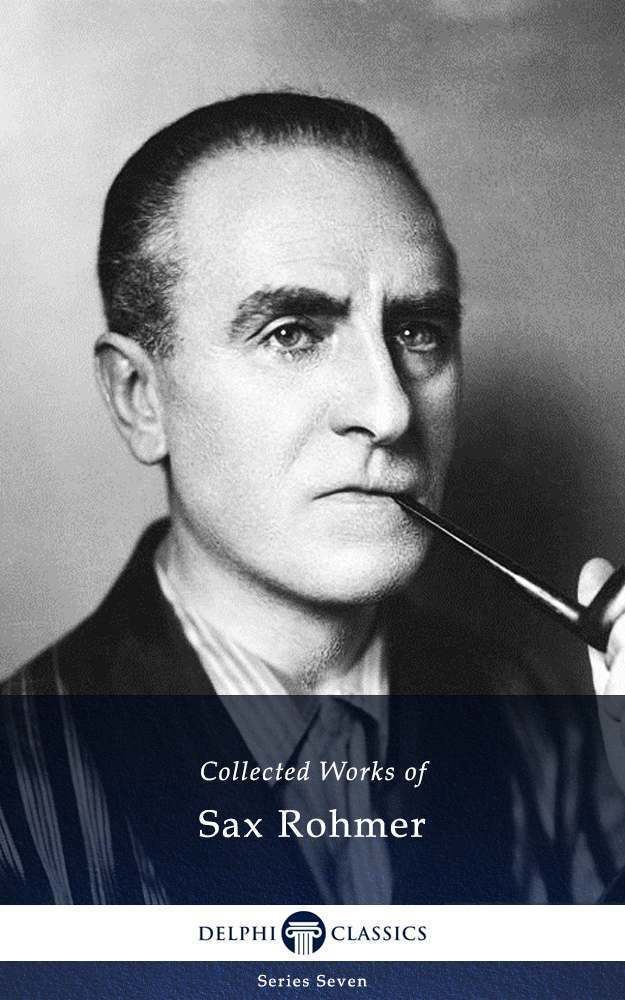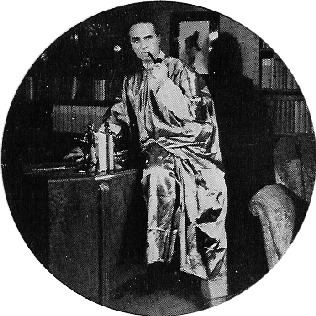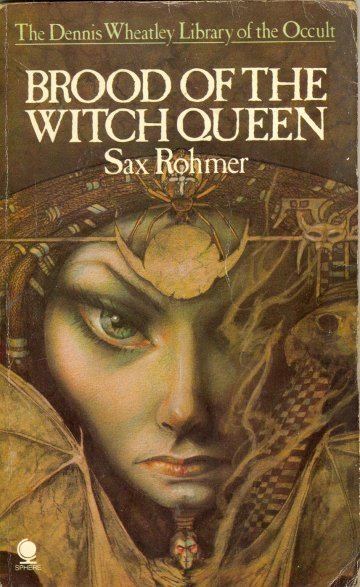Occupation Novelist Period 20th century Role Novelist | Nationality British Name Sax Rohmer Ex-spouse Rose Elizabeth Knox | |
 | ||
Born Arthur Henry Ward15 February 1883Birmingham, England, UK ( 1883-02-15 ) Pen name Sax Rohmer, Michael Furey, Arthur Sarsfield Ward Died June 1, 1959, White Plains, New York, United States Movies The Castle of Fu Manchu, The Mysterious Dr. Fu Manchu Books The Mystery of Dr Fu‑Ma, The Yellow Claw, The Hand of Fu‑Manchu, Brood of the Witch‑Queen, The Devil Doctor Similar People Harry Alan Towers, Jesús Franco, Edgar Wallace, Mary Roberts Rinehart, John Robert Colombo | ||
The Insidious Dr Fu Manchu Full Audiobook by Sax ROHMER by Action & Adventure Fiction
Arthur Henry Ward (15 February 1883 – 1 June 1959), better known as Sax Rohmer, was a prolific English novelist. He is best remembered for his series of novels featuring the master criminal Dr Fu Manchu.
Contents
- The Insidious Dr Fu Manchu Full Audiobook by Sax ROHMER by Action Adventure Fiction
- Sax rohmer crime writer
- Life and work
- The Fu Manchu series
- Other work
- Works
- References
Sax rohmer crime writer
Life and work

Born in Birmingham to a working-class family, Arthur Ward initially pursued a career as a civil servant before concentrating on writing full-time. He worked as a poet, songwriter and comedy sketch writer for Music hall performers before creating the Sax Rohmer persona and pursuing a career writing weird fiction.

Like his contemporaries Algernon Blackwood and Arthur Machen, Rohmer claimed membership to one of the factions of the qabbalistic Hermetic Order of the Golden Dawn. Rohmer also claimed ties to the Rosicrucians, but the validity of his claims has been questioned. His doctor and family friend, Dr R. Watson Councell may have been his only legitimate connection to such organisations.
His first published work came in 1903, when the short story "The Mysterious Mummy" was sold to Pearson's Weekly. Rohmer's main literary influences seem to have been Edgar Allan Poe, Arthur Conan Doyle and M. P. Shiel.

He gradually transitioned from writing for music hall performers to concentrating on short stories and serials for magazine publication. In 1909 he married Rose Elizabeth Knox.
He published his first book Pause! anonymously in 1910.
The Fu Manchu series

After penning Little Tich in 1911 (as ghostwriter for the famous music hall entertainer of the same name: Little Tich) he issued the first Fu Manchu novel, The Mystery of Dr. Fu-Manchu, serialised from October 1912 to June 1913. It was an immediate success, with its fast-paced story of Denis Nayland Smith and Dr. Petrie facing the worldwide conspiracy of the 'Yellow Peril'. The Fu Manchu stories, together with his more conventional detective series characters—Paul Harley, Gaston Max, Red Kerry, Morris Klaw (an occult detective), and The Crime Magnet—made Rohmer one of the most successful and well-paid authors of the 1920s and 1930s.
The first three Fu Manchu books were published in the four years 1913–17; but it was not until 1931 (some fourteen years after the third book in the series) that Rohmer returned to the series with The Daughter of Fu Manchu. The reason for the long interval was that Rohmer wanted to be well and truly done with the series after The Si-Fan Mysteries, much as Arthur Conan Doyle did with Sherlock Holmes. The first three books had been successfully filmed by Stoll in the twenties as a pair of serials. In 1928, Rohmer bowed to pressure and agreed to write a fourth novel as a serial for Collier's. Paramount had the first Warner Oland picture gearing up for production and the daily newspaper strip based on the series was in the offing. There was public demand for the character's return.
Rohmer's first effort at reviving the Fu Manchu property was eventually reworked as The Emperor of America. The original intent had been for the head of the organisation to be Fu Manchu's daughter. He kept Head Centre as a female criminal mastermind to combat Drake Roscoe, but was very unhappy with the book both as it started and in its finished form. He would later return to Drake Roscoe and his female supervillain for the Sumuru series. In the meantime, he tried again to focus his energies on what was first titled Fu Manchu's Daughter for Collier's in 1930, but with an older (now knighted) Nayland Smith as the protagonist once more. The results were infinitely better and jump-started the series in the process.
In the 28 years from 1931 to 1959, Rohmer added no fewer than 10 new books to the Fu Manchu series, meaning the series totals thirteen books in all (not counting the posthumous collection The Wrath of Fu Manchu). The Fu Manchu series drew much criticism from the Chinese government and Chinese communities in the US for what was seen as negative ethnic stereotyping. Sociologist Virginia Berridge claims Rohmer created a false image of London's Chinese community as crime-ridden, implausibly claiming that the Limehouse Chinese were one of the most law-abiding of London's ethnic minorities. Critic Jack Adrian notes that "Rohmer's own racism was careless and casual, a mere symptom of his times".
Other work
Rohmer made friends with escape artist Harry Houdini, who wrote to him in praise of Rohmer's The Romance of Sorcery. Rohmer based his mystery-solving magician character Bazarada on Houdini.
The Orchard of Tears is an odd book in the context of Sax Rohmer's other work. There are no oriental villains or exotic locations; rather, there are gentle rabbits and lambs in pastoral settings and a great deal of philosophical musing. As much as he enjoyed Fu Manchu—and the notoriety and income the character provided—Rohmer had other interests and a markedly serious side. The departure from his expected subject matter is plainly signalled by the book's dedication: "To the slaves of the pomegranate, sons of Adam and daughters of Eve, who drink at the fountain of life, this chalice is offered as a loving-cup".
In The Quest of the Sacred Slipper (1919) terror comes to Britain when a self-centered archaeologist unearths one of Islam's holiest relics—the sacred slipper of the prophet Mohammed. Until it is returned to its rightful people, the implacable Hassan of Aleppo vows his reign of death and destruction shall not cease. Behind these inhuman outrages is a secret group of fanatics. Not even the best men of Scotland Yard seem able to apprehend them.
Tales of Chinatown (1922) is a collection of ten stories published in hardcover by Cassell in 1922 and Doubleday, Page and Company in 1922. All the stories first appeared in magazine format. This collection includes a story considered one of his best and also anthologised many times; "Tcheriapin." The story "The Hand of the Mandarin Quong" was rewritten for this; first published as "Hand of the White Sheikh" Rohmer changed the setting to a Chinatown background and published it as "The Mystery of the Shriveled Hand", the title then changed for this collection.
Rohmer also wrote several novels of supernatural horror, including Brood of the Witch-Queen, described by Adrian as "Rohmer's masterpiece". Rohmer was very poor at managing his wealth, however, and made several disastrous business decisions that hampered him throughout his career. His final success came with a series of novels featuring a female variation on Fu Manchu, Sumuru. The Sumuru series consists of five books. Rohmer also wrote numerous short stories; "The Master of Hollow Grange" (1920), is a homage to M. R. James' story "Lost Hearts", featuring a mad scientist who preys on children.
Rohmer's work was banned in Nazi Germany, causing Rohmer to complain that he could not understand such censorship, stating "my stories are not inimical to Nazi ideals".
After World War II, Rohmer and his wife moved to New York, only returning to London shortly before his death. He died in 1959, ironically due to an outbreak of influenza ("Asian Flu").
His wife, Rose Elizabeth (Knox) Ward (1886–1979), published her own mystery novel, Bianca in Black, in 1958 under the pen name Elizabeth Sax Rohmer. Some editions of the book mistakenly credit her as Rohmer's daughter. She and Cay Van Ash (1918–1994), her husband's former assistant, wrote a biography of the author, Master of Villainy, published in 1972.
Works
For Rohmer's bibliography, see his full list of work.
Rohmer's wife published a number of works:
A note on texts: US editions of the Sumuru books (Gold Medal/Fawcett paperbacks) have texts which were frequently corrupted.
